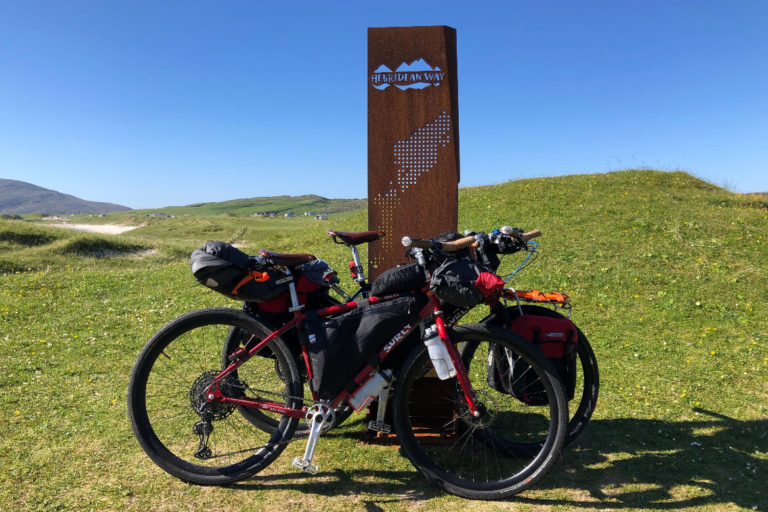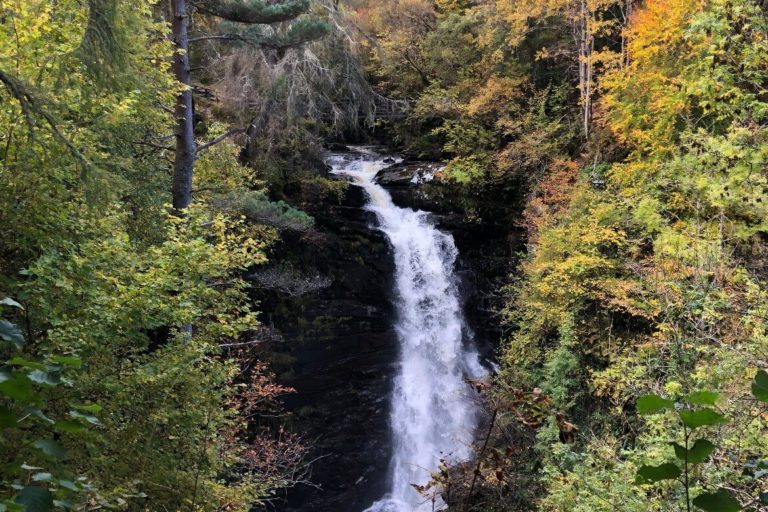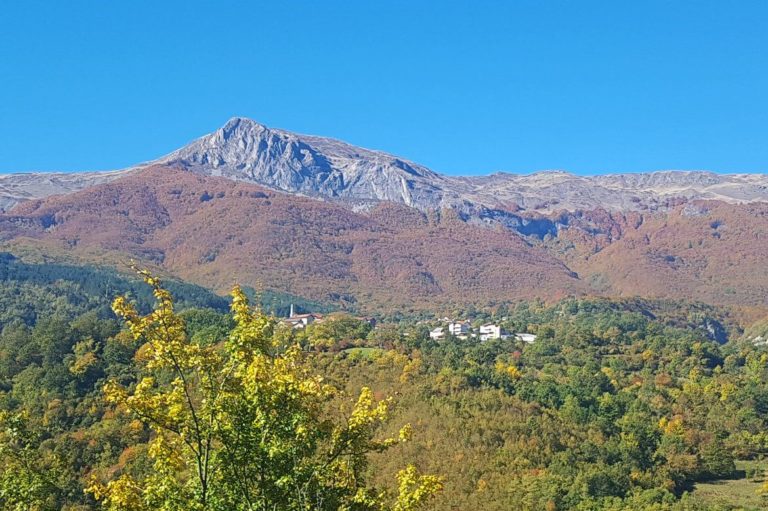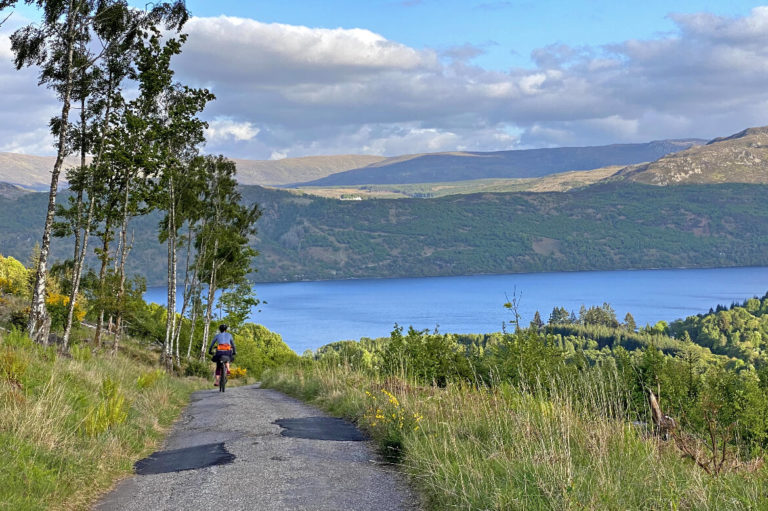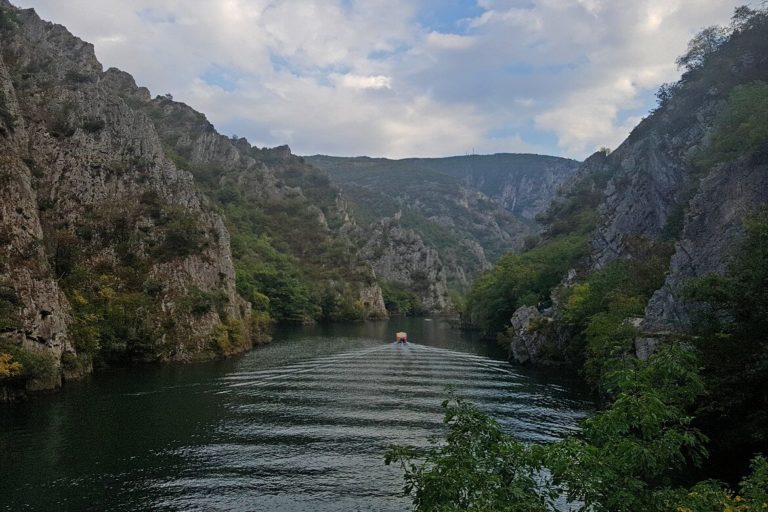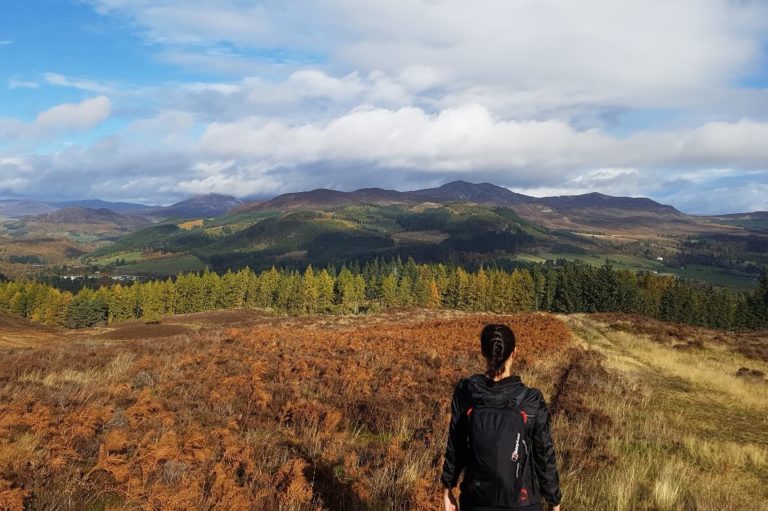Best beaches in the Outer Hebrides
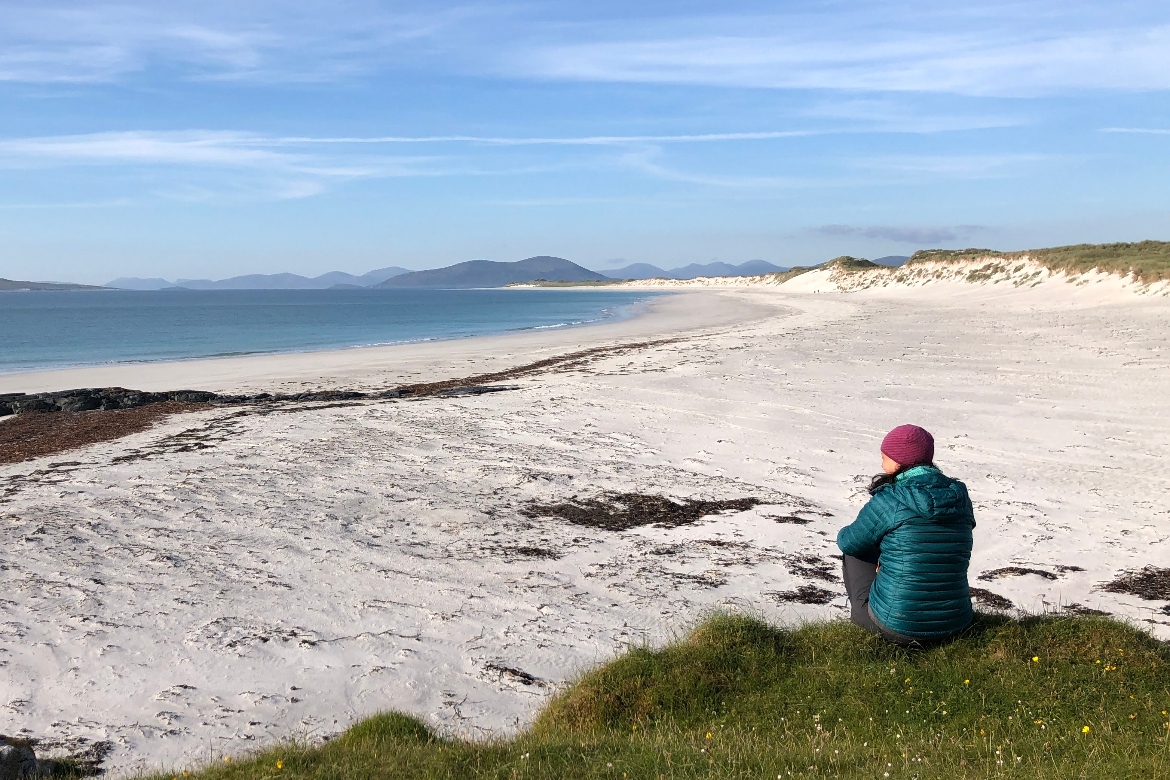
A trip to the Outer Hebrides isn’t complete without a visit to one of its beaches. Travellers and journalists have long shared picturesque images of white sandy bays kissed by aqua-blue waters, making the Outer Hebrides THE place to see some of the world’s most exquisite coastlines.
It’s difficult not to stumble across a beach when you visit the Hebrides. Each island’s coastline is dotted with expansive sandy bays fringed by colourful machair and lush, long-haired grasslands.
While the Outer Hebrides do have well-known and frequently visited beaches, the level of ‘busyness’ is far from what you’d experience in places like Cornwall or anywhere along England’s southern coast.
We visited the Hebrides in June when we cycled the Hebridean Way. Much of the time, we found ourselves among only a few other people, and at times, we had these beaches all to ourselves, which allowed us to soak up the seclusion and tranquillity Hebridean beaches provide.
Here, I share some of the best beaches we had the opportunity to visit in the Outer Hebrides. However, these are merely a few suggestions from the choice of beaches on these magical islands.
Hebridean Beach Map
This guide includes
Vatersay Beaches
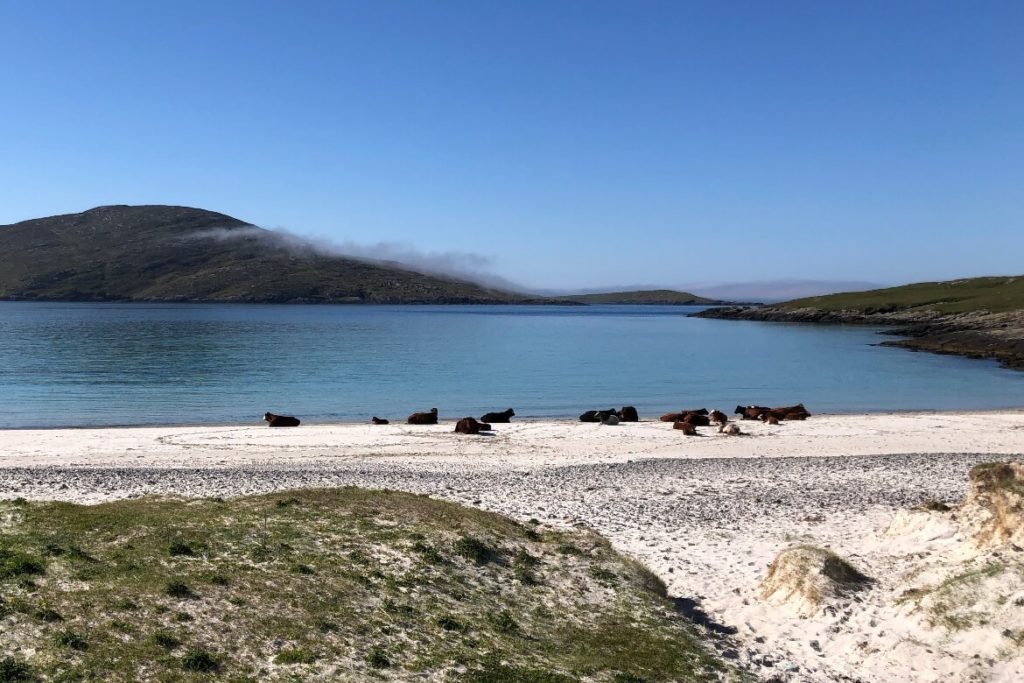
Vatersay is the most southerly inhabited island of the Outer Hebrides that you can reach via a 250-metre causeway from Barra. The island spans approximately 5 miles from North to South, making it easy to get around, especially if you are on a bike or foot.
Here’s a collection of three of Vatersay’s beautiful beaches, each with its own unique charm and allure.
Traigh Bharlais
First, on the northwest coast of Vatersay, you’ll find Traigh Bharlais, a hidden gem that greets you just after crossing the causeway.
Accessed at the end of the road through Caolos and a short walk through some fields, this secluded bay is surrounded by towering dunes and hills.
The bay is somewhat rocky, which is great for rock pool exploring when the tide is out.
Bhatarsaigh Bagh (East Beach)
As you make your way to the narrow centre of the island, you’ll come across the most popular beach on Vatersay – Bhatarsaigh Bagh (East Beach). This wide sandy bay stretches for approximately half a mile.
East Beach also serves as the start or end point for cyclists and walkers exploring the Hebridean Way, making it a great base to start or end your adventure. There are also convenient amenities like a café, parking, and toilets nearby.
Bagh a Deas (South Bay)
A short distance further south from Bhatarsaigh Bagh and Traigh Shiar is Bagh a Deas (South Bay). To reach this charming little bay, you’ll pass through a grassy meadow, and you might even spot some friendly local Coos (cows) enjoying the peaceful surroundings.
Barra Beaches
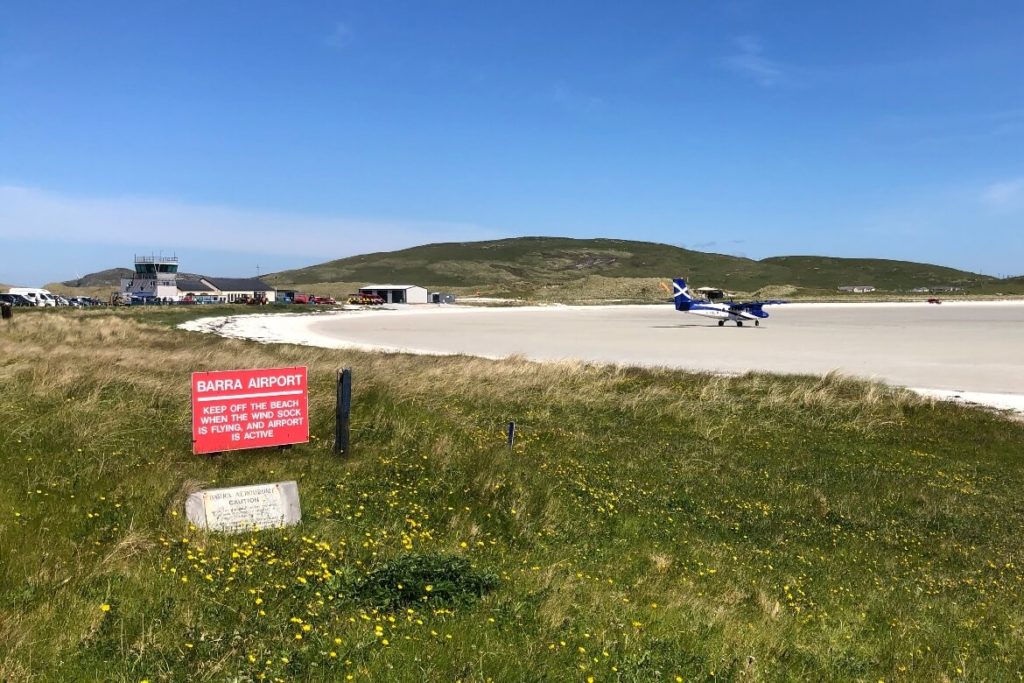
There are several beaches and bays on Barra. Nearly all beaches are accessible all year round except for probably the most famous one, Traigh Mhor, also known as the island’s airport beach – more on this beach to come!
Eoligarry Beach
Located on the north-eastern tip of Barra overlooked by an abandoned farmhouse, Eoligarry Beach is a quiet sandy bay stretching 2.5 miles long. It’s great for wildlife spotting and exploring rock pools and is popular with surfers. It was also voted as the top Scottish beach in the Big 7 travel company’s top 50 most eye-catching places to visit in the UK in 2023.
Advice from other visitors is to visit this beach at low tide, because high tide covers most of the beach leaving only a small section to walk on near Eoligarry Harbour.
Traigh Mhor Beach
Traigh Mhor is home to Barra airport and runway on the east coast of the Eoligarry peninsula. The 2-mile beach was first licensed as a runway in 1936 and is the only beach runway in the world with scheduled planes operating – it is a tourist attraction its self. Flights arrive from Glasgow, but due to the tides, only operates twice a day.
Scheduling a visit to Traigh Mhor when a plane is due to land is a highlight when visiting Barra. Check Barra Airport’s arrival and departure times so you can plan a visit at the right time.
There are two great spots for watching the planes. The best is along the grass verge between the beach and the road. The second is at Barra airport’s car park, where there are facilities for visitors to use.
You can still access the Traigh Mhor beach for a walk or dip in the sea, but only outside the airport’s operating hours.
The beach is vast with pristine white sands and aquamarine waters. It’s a great place to walk and a favourite spot for collecting cockles.
Bagh Halaman (Tangasdale beach)
Tangasdale Beach is a large white sandy beach that lies just south of Traigh Mhor on the West coast of Barra. It’s another popular beach with some fascinating rock pools to scramble around.
The beach is not far from the road so it is easily accessible. Overlooked by the Isle of Barra Beach Hotel, it is the most westerly beach in the UK.
A tip from other travellers is to come at sunset and you’ll likely have the beach to yourself as you watch the sun set over the Atlantic.
Eriskay Beaches
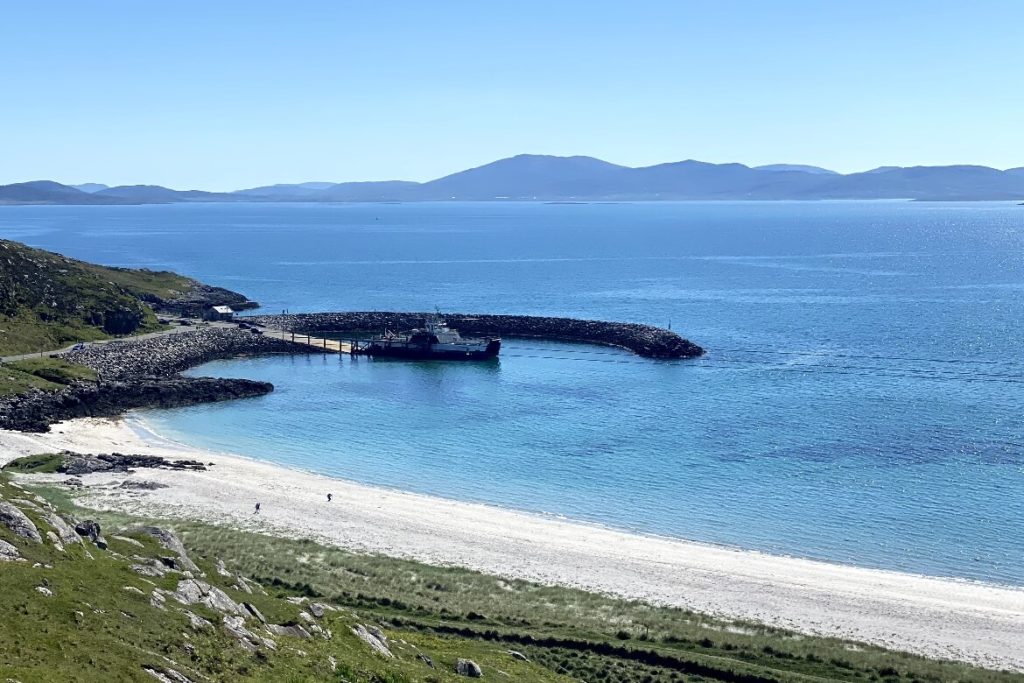
Eriskay is one of the Outer Hebrides’ smaller islands spanning just three miles long and located between Barra and South Uist. Some travellers zoom head straight through Eriskay as they make their way north to South Uist, but the island has two beautiful beaches that are well worth exploring.
Coilleag a’Phrionnsa (the Prince’s cockleshell strand)
Out of the two main beaches of Eriskay, the Prince’s beach is probably the most visited. It’s a long sandy beach found just north of Eriskay’s ferry terminal.
It’s well known as the place where Bonnie Prince Charlie first set foot on dry land before he attempted to take back the throne in the 1745 Jacobite Rebellion. Above the beach is a cairn commemorating the Bonnie Prince’s landing.
The beach is a photographer’s dream with white-as-white sands and bright blue waters. There’s a great three-mile walk that takes you along Coilleag a Phrionnsa and loops back up over the hills.
Rubha Ban Beach
Rubha Ban is the lesser-known beach on Eriskay and is located over the headland north of Prince’s Beach. A quiet sandy beach stretching about a mile long.
This beach is overlooked by the Politician pub, named after the SS Politician that tragically hit the rocks while it was on its way to the US in 1941. The shipwreck washed up 264,000 bottles of Scottish Whisky, a story with which the famous film ‘Whisky Galore’ was created!
South Uist Beaches
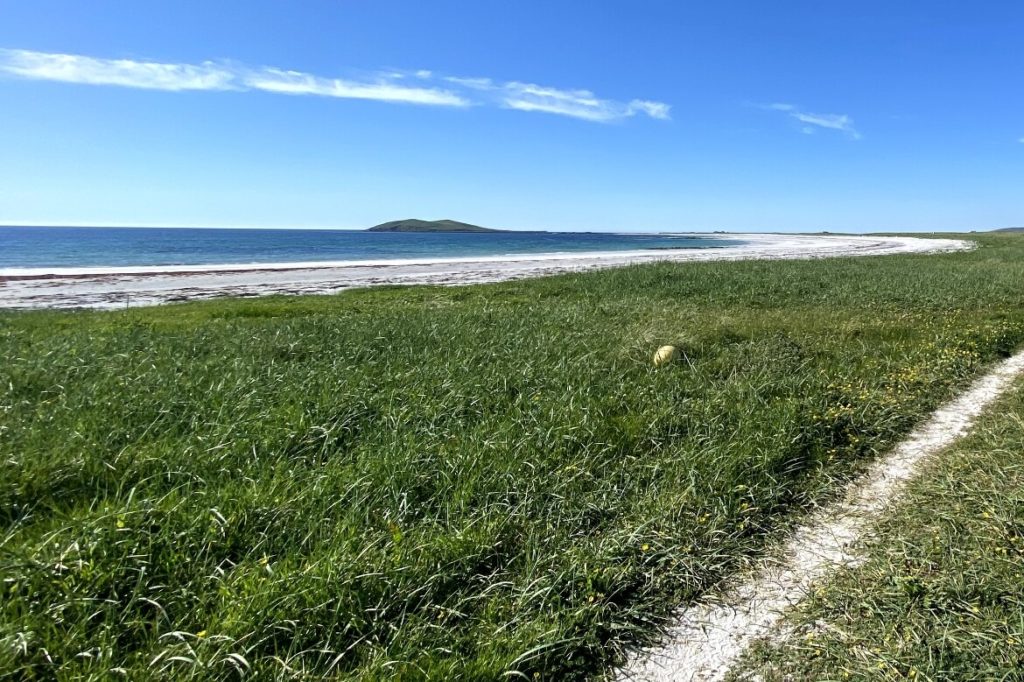
The west coast of South Uist has several beaches that join to span around 20 miles. The main road that runs through South Uist is about a mile east of the coastline.
If you are exploring these beaches on bike or foot there are good walking trails that hug the sandy coastline or sandy farm tracks to cycle on.
Askernish, Frobost, and Kildonan Beach
These three beaches join and create the southern stretch of South Uist’s 20-mile sandy coastline. All three beaches are havens for wildlife thanks to the wildflower machair meadows that line the sandy bays.
The shallow waters are also a haven for sea wildlife, including seals, which we were lucky enough to spot basking on the rocks at Kildonan beach at low tide.
North Uist Beaches
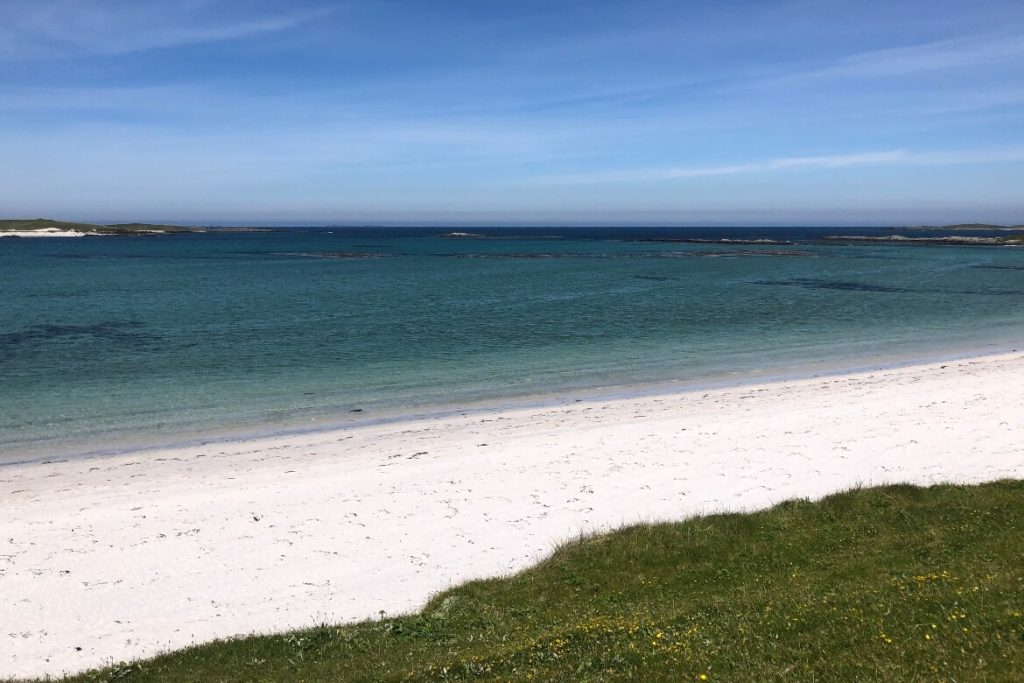
North Uist is the tenth largest island in the Hebrides. Many of North Uist beaches are located in the northwest of the island and are usually located no more than a mile from the road.
Balranald beach
Balranald Beach is a segment of the RSPB’s Balranald Nature Reserve, serving as a paradise for wildlife enthusiasts. To venture out to the beach, you can take the 3.5-mile marked trail that starts at the RSPB’s visitor centre.
If you’re keen to discover a beach with pristine white sands, this might be a valuable addition to your itinerary. While we didn’t go for a swim ourselves, the water appeared highly inviting as it was flat as a pancake.
Tràigh Ear and Tràigh Iar Beaches
Tràigh Ear and Tràigh Iar are two beaches that run parallel to one another on the eastern and western coasts of the Udal Peninsula. Located approximately half a mile from the road at Grenitote, both beaches are stunning and offer hours of exploration.
There is a picnic spot that overlooks Traigh Ear, providing the perfect location to enjoy a picnic lunch with a view. Afterward, you can explore both beaches by embarking on a six-mile circular walk that takes you across both bays and extends to the tip of the peninsula, where you’ll encounter an ancient cemetery of the MacLeans of Boreray.
Clachan Sands
Clachan Sands is probably one of the more popular beaches in North Uist. With its tropical appearance of bright white sand scattered with broken shells accompanied by crystal clear water, you can understand why.
The day we visited, the water was so calm and inviting we decided to take the plunge for a quick dip. ‘Crisp’ and ‘refreshing’ are two words that come to mind to describe the experience, but a memorable way to soak up the beauty of this beach.
Access to the beach is via a single track approximately one mile from the road. The beach is accessible to nearly all vehicles as the headland overlooking the beach serves as a popular campervan spot.
Upon arriving at the headland, you’re likely to find campervan’s parked up on the grass. This might make the area feel a bit crowded (and by crowded, I mean by Hebridean standards). So, although you might not have the beach entirely to yourself, as you might at other beaches, Clachan Sands is still worth visiting.
Berneray Beaches
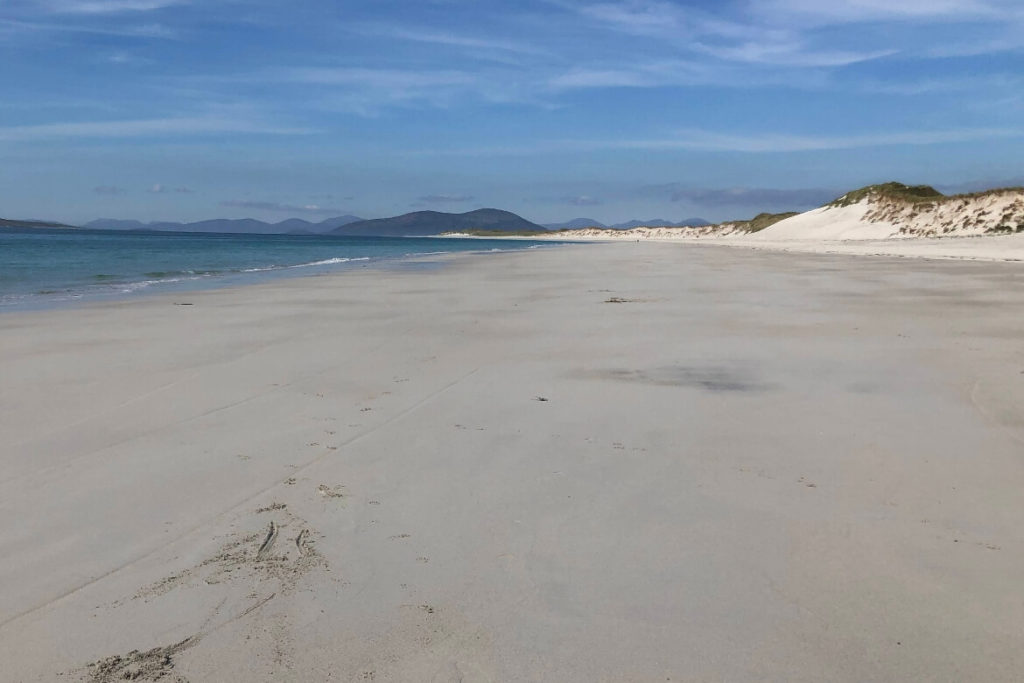
Berneray is another island, only 2 miles long from north to south, but it is home to two of the most stunning beaches in the Hebrides – East Beach and West Beach.
East Beach
Berneray’s East Beach is the more accessible beach on the island, primarily due to its proximity to the main road and Bernerays’ village centre.
The sandy stretch of sand has expansive views that stretch out to Harris. The beach also serves as an excellent place to spot wildlife and is close to Berneray’s Seal viewing point, where you’re almost guaranteed to see common seals on the rocks.
The beach has gained popularity among campervan travellers thanks to the flat grass verge that offers an overlook of the beach and being near the harbour that offers hot showers, toilets, and recycling bins.
West Beach
West Beach spans over 3 miles of exquisite white sand, encompassing machair and dunes, and could easily be considered Berneray’s number one destination on the island.
Some may have come across images of West Beach in the newspapers when the story broke about the Hebridean beach being mistakenly advertised by the Thai tourism board as Kai Bae Beach in Thailand. Yes, this is indeed that very beach!
Furthermore, it ranked as the 3rd best beach in Europe in Lonely Planet’s top 20 beaches in Europe for the year 2020.
Located just under 2 miles from the main road, it requires more effort to access than its counterpart, East Beach. However, the endeavour is undoubtedly worthwhile.
Surprisingly, despite being such a renowned beach, we found ourselves to be the only people there. Granted, we arrived in the early evening, but we were pleasantly surprised to enjoy the entire beach to ourselves.
Harris Beaches
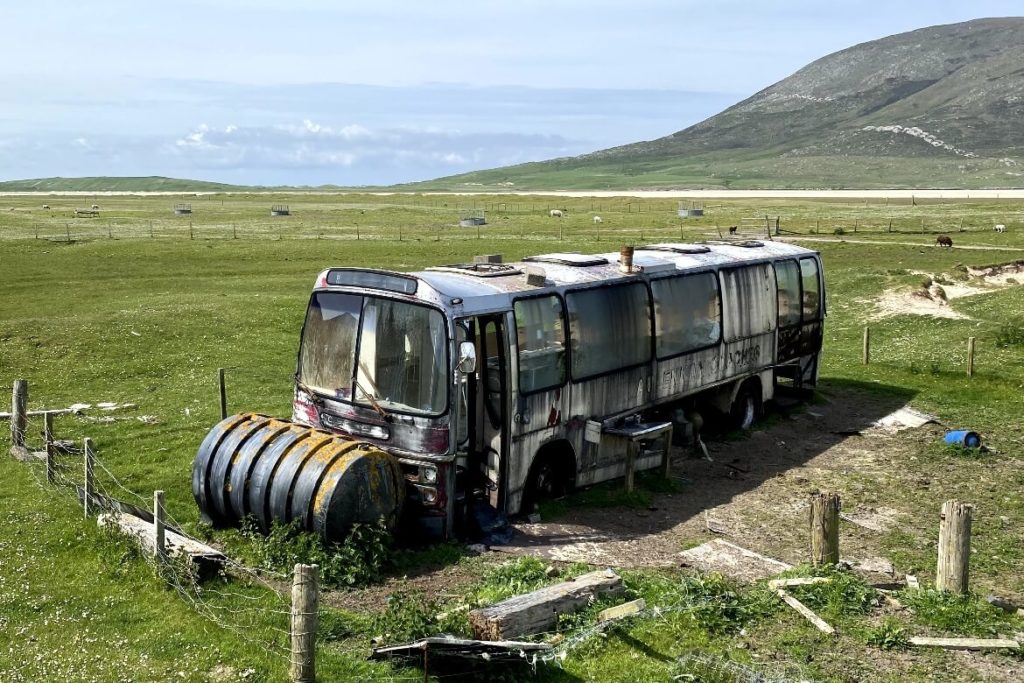
Scarista beach
Scarista Beach, situated on the west coast of South Harris, features stunning golden sands that gently slope into the Atlantic Ocean.
To reach the beach, you’ll cross grasslands and dunes from the main road. Here, you’re likely to come across an abandoned bus, famously known as the Scarista Bus.
This intriguing, weathered passenger bus is a curious exploration. At some point, it was converted into a campervan equipped with a toilet, kitchen stove, and even a visitor book.
Now, it sits empty on the grassy hill overlooking the beach. Its potential as a shelter is uncertain, but it could offer refuge from rain for hikers or cyclists passing by.
Seilebost beach
Seilebost Beach consistently ranks as one of the UK’s top beaches in numerous polls and is often compared to Seychelles by travellers, albeit with different weather conditions.
Situated on the northwest side of South Harris, opposite its sister beach, Luskentyre Beach (which we’ll explore next), Seilebost Beach is a must-visit destination.
This expansive beach, surrounded by Harris’s mountains, becomes vast during low tide. Its gleaming white sands and tropical blue waters create the ideal setting for a few hours of relaxation.
Access to the beach is via a path through the dunes from the car park and road.
Luskentyre beach
Luskentyre Beach is one of Harris’s largest and most renowned beaches, frequently earning a spot on various top beach lists.
Situated in the northwestern part of south Harris, this beach boasts a breathtaking mountainous backdrop and offers expansive views of Taransay Island, which was the location for the BBC’s reality show in 2000, which marked the beginning of Ben Fogle’s TV presenting career.
To reach Luskentyre Beach, take a minor road signposted to Losgaintir from the main road. You’ll find a small car park there.
Outer Hebrides Beaches FAQs
Can you swim in the Outer Hebrides?
While we did swim in the sea during our visit to the Outer Hebrides, I’m not going to provide any advice on whether specific beaches are suitable for swimming, as I’m not an expert on this matter. Every beach’s conditions will vary throughout the year, and individuals’ swimming capabilities differ as well.
However, if you’re considering swimming in the Hebridean Sea, I would recommend consulting swimming safety resources like Water Safety Scotland’s open water swimming advice hub or the Swimming in the Hebrides guide by Immerse Hebrides.
These resources can offer valuable insights and guidelines for staying safe when swimming in the Hebridean Sea.
Is the sea cold in the Outer Hebrides?
Between April and September, the temperature of the Hebridean Sea can range from approximately 8 to 15 degrees Celsius.
However, during our visit in June, the water still retained a noticeable chill. During winter months the sea temperature can plummet to as low as 5 degrees Celsius.
What is the best month to visit the Outer Hebrides?
May, June, and September are considered the best months to explore the Outer Hebrides.
During this period, it is less crowded compared to the UK summer holiday months of July and August. Also, the weather is likely to be more favourable (although you can’t always guarantee good weather in Scotland). June, in particular, boasts the longest days of the year, offering visitors ample time for outdoor activities.
On the flip side, if you visit during the winter months, you have a greater chance of seeing the northern lights. These months also provide an excellent opportunity to experience the awe-inspiring storms as they fiercely roll in from the surrounding seas.
Throughout the summer months, temperatures generally range from 10 degrees Celsius to the mid-20s. May is usually the driest month, while December can experience temperatures as low as 3 degrees Celsius and is predominantly the wettest month.

